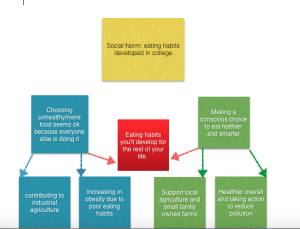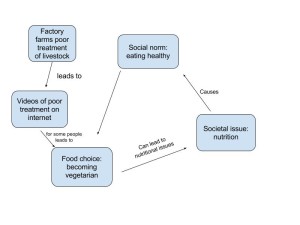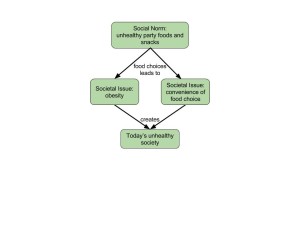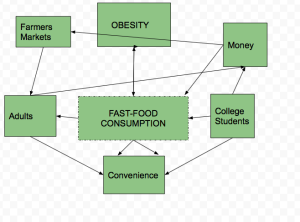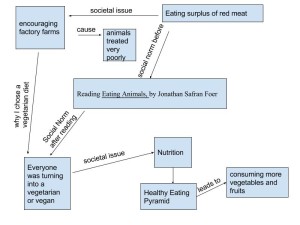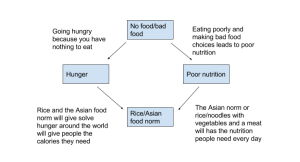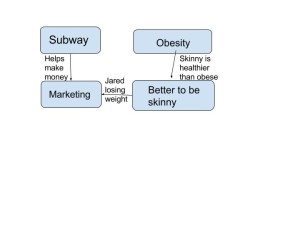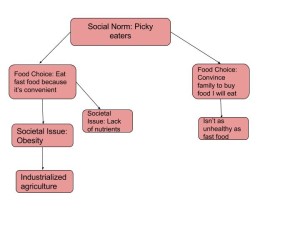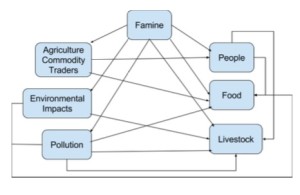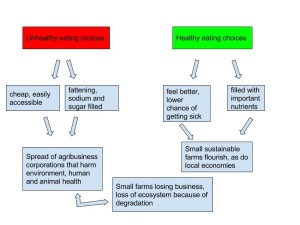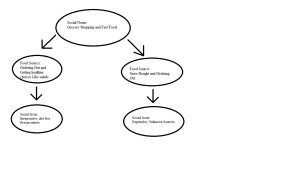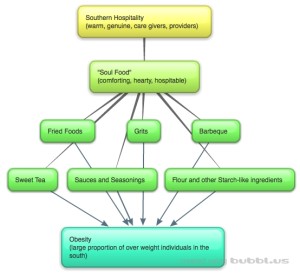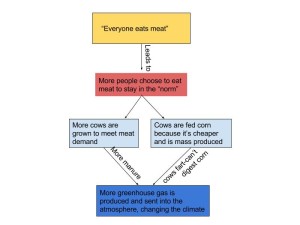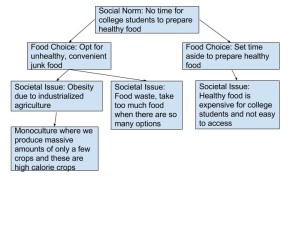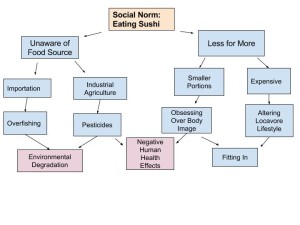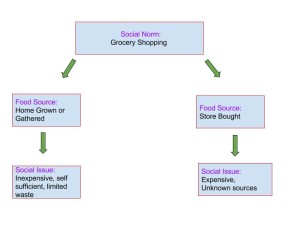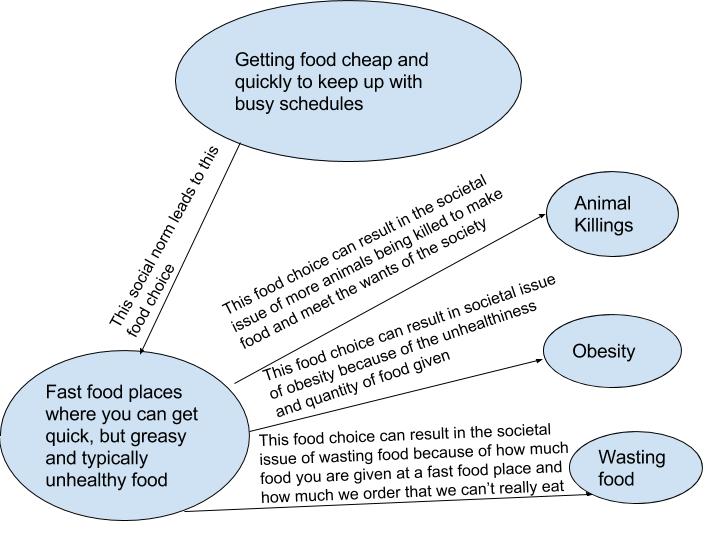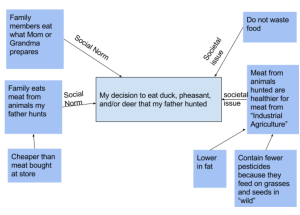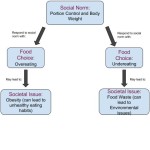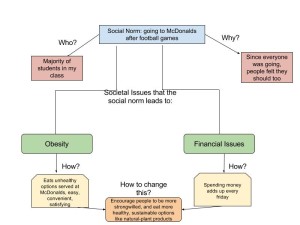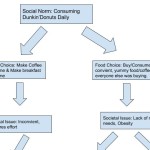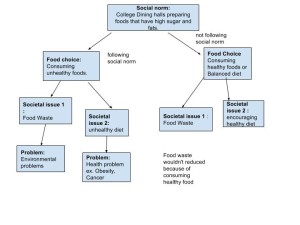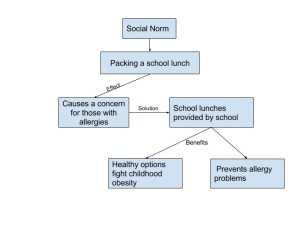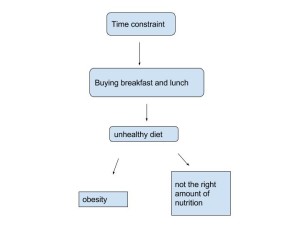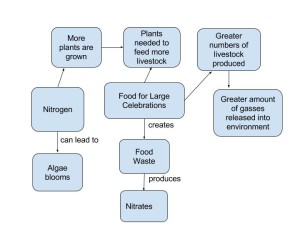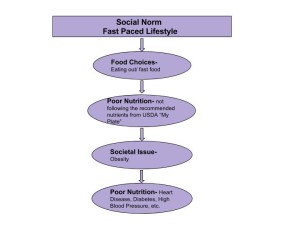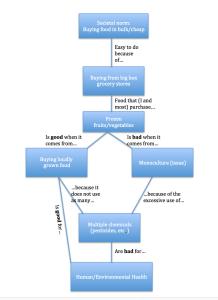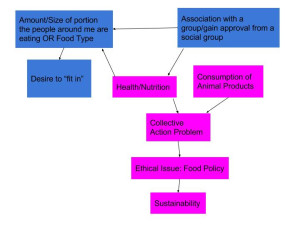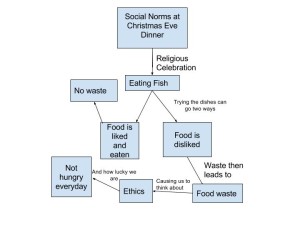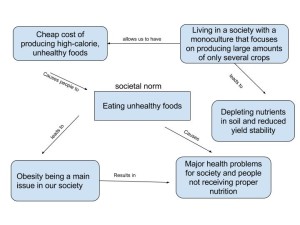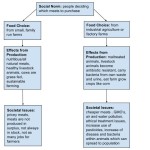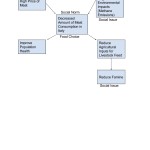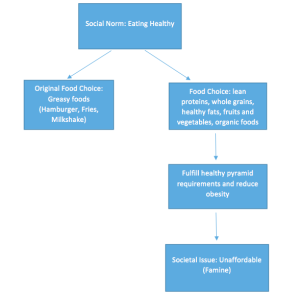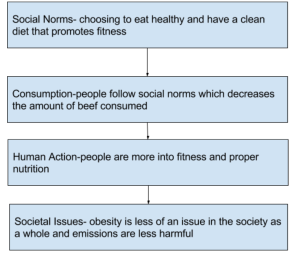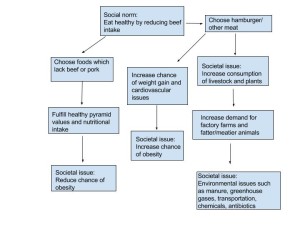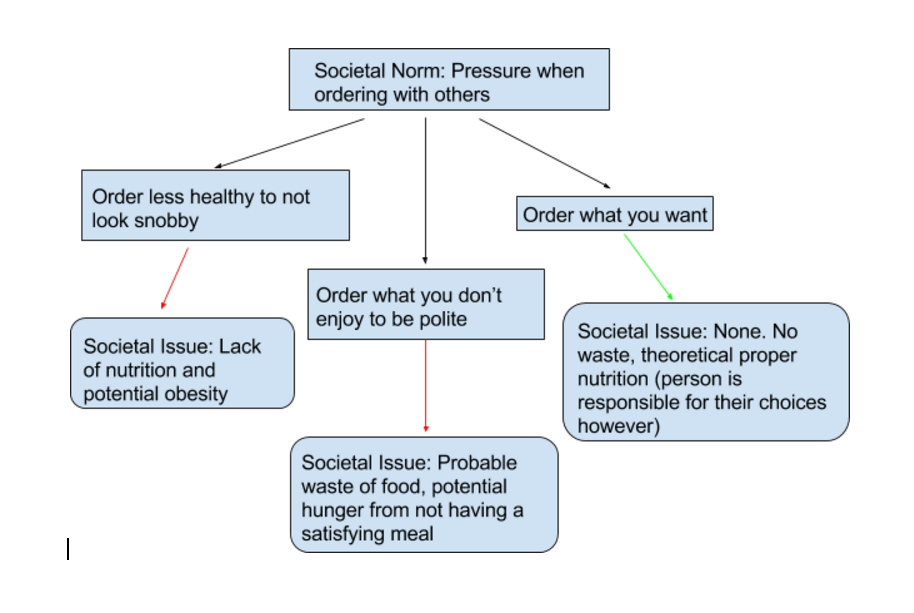1) For years I have always been careful with the type and amount of food I have consumed. Being involved with sports since I was young has made me have to watch what I eat, however it has not always been easy. When I arrived at college I made a lot of new friends but not all of them are as cautious of what they eat as I am. Making a midnight run to the local pizza shop is kind of a norm among college kids and of course I wanted to fit in with my new friends. It was difficult at first for them to understand why I didn’t want any food because for them it was like I was rejecting a friendly offering. Eventually I caved and had a slice. This was not me making a choice based on my own personal preferences but rather me being pressured into going with the social norms of college life.
2) Unhealthy eating habits among college students has contributed to obesity all across America. As recently graduated young adults going out into the real world, many will not change their diets. I see people going for two or sometimes three plates of food in the dining commons, it’s becoming excessive. If we keep developing these habits and continuing to eat more than we need, it will lead to an increase in the use of industrial agriculture. Pollution from cattle, farming equipment, and fertilizer will continually grow; not to mention the acres of land that have been lost due to deforestation. I understand eating meals with peers is a good way to socialize but we have to learn how to control ourselves and not letting friends influence what we eat because that’s what they are doing.

